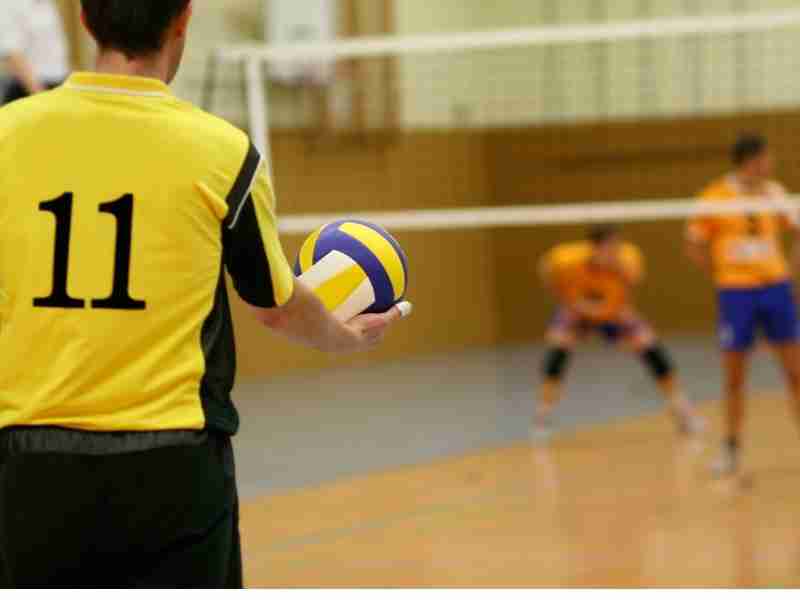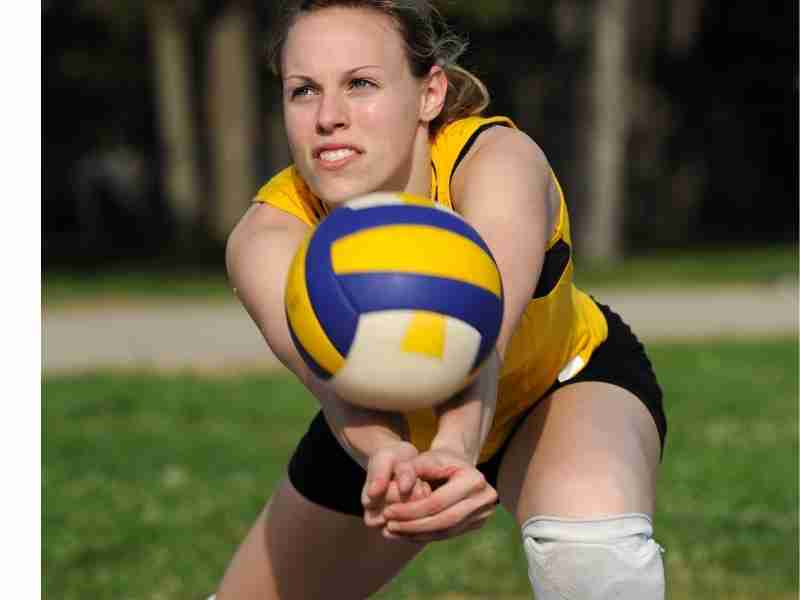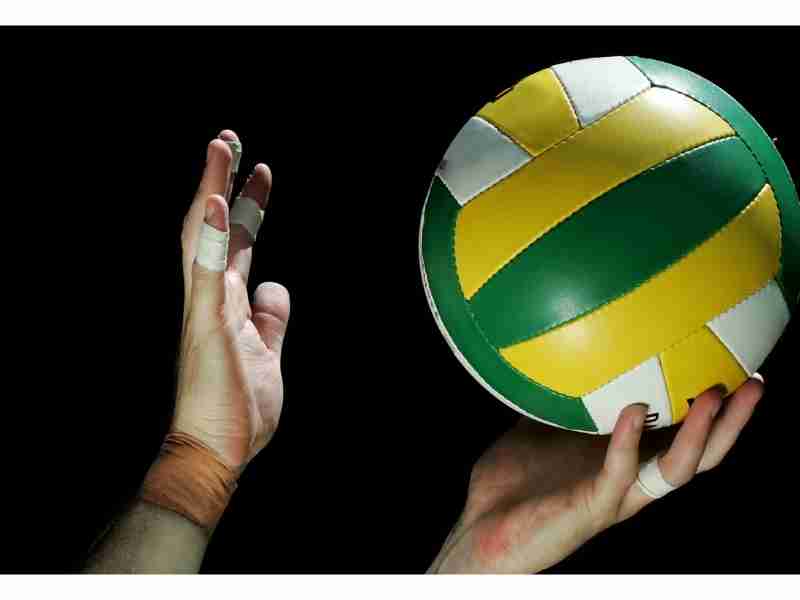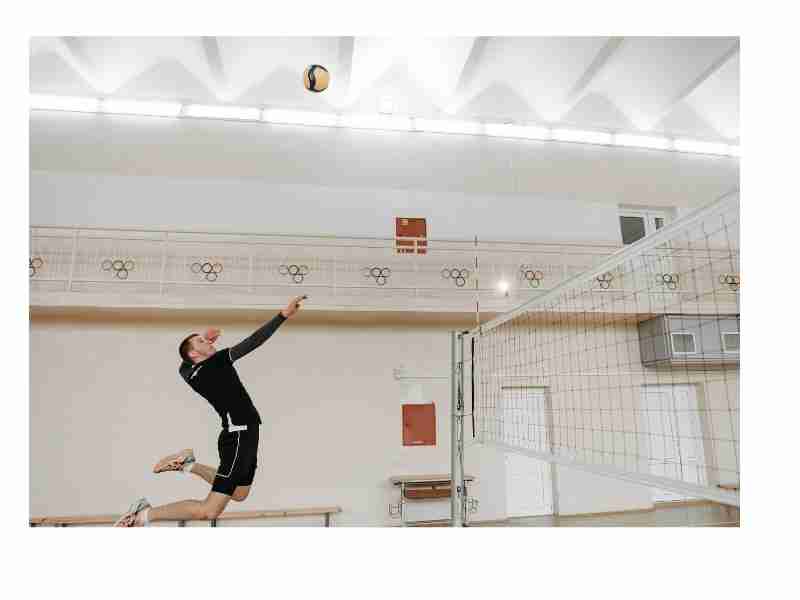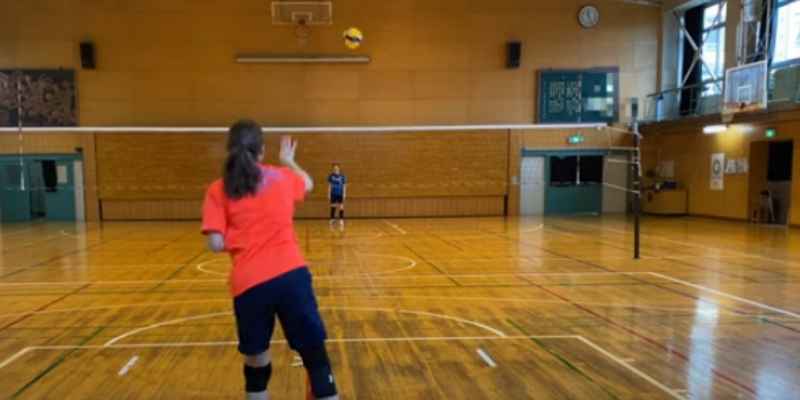
The importance of serving cannot be overstated. Every point starts with a great server, and their ability to put the ball in a position that stresses opposing players’ passing skills will decide who wins matches! This article explains why servers are so important and tips for beginners and veterans looking to improve consistency on the court.
The Importance of Consistent Serving
Serving consistently is one of the most critical factors to keeping a team in the game. At any level, teams with unreliable serving tendencies will struggle to compete. A great serve accomplishes two tasks:
Keeping the ball in play and allowing the team to defend and attack first sets up your team for success. The ideal serve is an ace (one that first touches the ground or is poorly handled by the first passer), but putting a serve in play is also advantageous.
The second aspect of consistent, reliable serves is their effect on the opponent’s mindset. If a server is unreliable, trust is placed in the server’s receiving side of the Internet.
By ensuring that the ball is in play and that the team has the opportunity to defend and attack, it first sets up your team for success. Although an ace (a serve that first touches the ground or is handled carelessly by the first passer) is ideal, placing a serve in play is also beneficial.
Consistent servers pressure their opponents and alleviate some of their teammates’ pressure. Therefore, consistent serving can be a crucial aspect of winning volleyball matches.
5 Types of Serves in Volleyball
There are five primary serves in volleyball, four of which are typically seen in competitions. The most common are the underhand, overhand, float, topspin, and jump serves. Here’s a brief rundown on these five serves you need to be familiar with and teach.
Underhanded Serve
The underhand serve is often seen as a weak or amateurish move in volleyball. However, it can be a valuable tool for young or inexperienced players. The underhand serve allows players to get the ball over the net without generating much power. This can be helpful for players who are still developing their strength or have trouble coordinating their timing.
In addition, the underhand serve can help to prevent errors by keeping the ball low and close to the net. As a result, it can be a valuable tool for players of all levels and should not be dismissed as a cheap or amateurish move.
Overhand Serving
Overhand serves are the most prevalent in volleyball. It is performed by holding the ball with the non-dominant hand and extending it from the shoulder forward. The ball is then thrown up and contacted with the dominant hand as it descends from the head to the waist.
This serve is well-liked because it can accommodate power, accuracy, and a variety of spins. The jump serves, the topspin serves, and the float serve is all types of overhand serves.
Hand position, follow-through, body speed, and swing speed can be used to manipulate an overhand serve. This adaptability is crucial for developing a successful repertoire of serves to employ throughout a match.
The Floater
The floater serve is one of the most effective serves in volleyball. This type of serve is hit with little spin, making it difficult to return. Floaters frequently move left or right unexpectedly and quickly lose momentum. This can be disastrous for an unwary or untrustworthy bystander.
The steps for an overhand floater to serve, followed by hand contact, should take place directly behind the middle of the volleyball. The arm will descend but should be stopped before it reaches the waist. The goal is to generate power while producing no spin. A floater serve, when executed correctly, can be a powerful weapon in your volleyball arsenal.
The Topspin
The topspin serve is an excellent way to exert pressure on the opponent. This service is fast and can drop just over the net, putting serve receivers in a difficult position. Adding topspin can be an effective way for weaker players to impart a quality force on the ball. After performing the steps for an overhand serve with a high toss, the player should move underneath the toss and strike the ball from below. With a strong wrist snap, the follow-through should be down and then toward the outside of the shoulder.
The trajectory of the topspin serve is more predictable than that of the floater, making it easier for defenders to anticipate how to receive. The difficulty stems from the power (and speed) with which you can serve, as the topspin causes the ball to curl down after crossing the net rather than soaring to the back wall of the court.
You have the potential to obtain aces in two situations due to your highly potent spin.
Players may believe the ball will go out of bounds but drops inside the line. Players believe they are in a position to catch the ball, but it falls just out of reach in front of them.
The topspin serve is better suited for serving deep into the court, and it is easier to hit specific spots due to the more consistent flight of the ball.
Jump Serves
Most individuals believe that the only way to serve a ball in volleyball is to stand and toss it into the court, so it bounces off one of the opposing team’s players. This is not the situation. Various types of serves can make it more challenging for the receiving team to return the ball. Jump serves are the most challenging to return.
The non-dominant hand tosses the ball very high and several feet in front of the player. A player approaches and leaps to attack the ball—a firm wrist and a brief follow-through aid in maintaining control throughout the entire server. During a jump serve, both topspin and float techniques are possible.
The jump serve is challenging to execute and is less accurate. However, when executed effectively, it is impossible to reverse. Even the best serve receivers struggle to handle the power and spin produced by a good jump serve.
Jump serves are tough and should only be attempted by players who have mastered the standard standing serve. Serves executed via a jump can be either jump floaters or jump topspins. Aside from beginning several paces behind the service line and performing an approach and jump, these serves are identical.
You will toss significantly higher than the other tosses because the ball must remain in the air for a more extended period for you to catch it. You may toss using either hand (or both).
Your throw is the most challenging aspect to master. If you can maintain a consistent throw, approaching consistently becomes considerably more manageable.
The complexity of the jump serve is due to the numerous moving parts. For the remaining serves, you need only concentrate on making solid contact. With jump serves, you must consider a more difficult toss, a proper approach, and the timing of it all.
Jump serving is a skill that can be mastered with enough practice, despite its difficulties. When executed correctly, this service can be challenging for the other team to return.
Serving Location
Your team’s consistent and adaptable service capabilities can be utilized in various ways.
Here are a few tips on how to take advantage of the location to increase your serving success rate:
In volleyball, the service is among the most crucial shots. It is dependent upon placement and velocity to be a game-changer. The objective is to strike the ball with enough force to reach the soft spot in the middle, where the two players attempt to communicate. This way, they will not be able to pass effectively, and you will have an easy point. Just remember to keep your eyes on the ball and to strike it well!
When serving, you should make it as challenging as possible for your opponent to return the ball. However, how can you do that? Deception is the key. You can surprise your opponents by using your eyes to indicate a middle serve and your hand placement to direct the ball toward the line. Of course, this is not always easy. With practice, however, you will be able to serve a storm. Remember to take the ball down the line the next time you step onto the court.
Any volleyball player will tell you that keeping your opponents guessing is the key to setting up a successful hit. A well-placed serve can help you accomplish this goal. You can direct the ball to the opposite side of the court from the server by contacting and following through slightly outside the center of the ball. This will force your opponents to adjust their positioning, giving you a greater chance to land a clean hit. They may even run into each other if they’re not careful! Remember to utilize a cross-court misdirection the next time you serve the ball.
In volleyball, a player who can control the velocity of their serve has a significant advantage. Defending against a hard serve is significantly easier if the receiver anticipates a slow serve. Therefore, they may be hesitant to return the ball aggressively, making it more straightforward for the server to win the point. Additionally, a slow server can surprise opponents who anticipate a harder hit. By altering the speed of their serves, players can throw off their opponents and improve their chances of victory. Remember to slow it down the next time you are serving for optimal results.
Behind the serve receivers in volleyball, the space for the deep shot over the top is frequently open. If a team is leaving this area undefended, attack it. You can send a float serve or a faster one to this area to determine whether or not passers-by can arrive on time. This is a great way to score easy points and force your opponents to defend. Maintain vigilance over the receiver, as they may attempt to sneak up and block your shot.
Volleyball’s jump float serve as one of the most challenging and effective. When executed correctly, it can be challenging for opponents to return. The key to executing a jump float serve is reducing the ball’s velocity. This can be accomplished with a light touch and by not jumping too high. You can send the ball over the net with greater precision if you reduce the ball’s speed. This confusion frequently results in errors during the serve and receive, making it difficult for opponents to launch an effective return attack. As a result, the jump float serve is an effective strategy for winning points and keeping opponents off-balance.
The sky ball is a volleyball serve intended to descend like a meteor. This type of serve can be effective against teams that have proven adept at returning serves throughout the match. The combination of uncommonness and an obtuse angle can result in a poor pass and restore your serving efficiency. The sky ball is a problematic serve to master, but it can be an extremely effective weapon when executed correctly. Consider incorporating the sky ball into your serving repertoire if you wish to improve.
Quick Serve Strategy Coaching Tips
Volleyball is a game of strategy as much as a game of skill. A critical aspect of strategic volleyball is choosing the proper serve for the situation. The 80-90-100 rule is a good benchmark for more accurate serves. To put this rule into effect, aim for an 80% success rate on your first serve, a 90% success rate on your second serve, and a 100% success rate on your third serve. This will keep your opponent on their toes and force them to adjust their game plan constantly.
Additionally, varying the speed of your serves throughout the match will keep your opponent guessing and make it more difficult for them to return your serve effectively.
Finally, remember that serves don’t have to be hit as hard as possible to be effective. Often, softer and more controlled shots are just as effective, if not more so. Following these serve strategies can gain a significant advantage over your opponent.
Beach volleyball serves
A Strong Server
Stronger servers maybe even more of a game changer in beach volleyball than indoor volleyball. A great server can’t serve more often than once every six positions the team rotates through. There are merely two individuals per team in beach volleyball, so a fantastic server offers half the service rotation options. Having a superstar server in beach volleyball is even more critical, as the service can be used to set up a point-scoring play.
Factoring in the Wind When Serving In Beach Volleyball
The wind is a significant issue in beach volleyball regarding the serving. The ball’s flight will be affected not only by the wind’s strength and direction but also by the wind’s direction. When there is little or no wind, many beach players rely on their floaters instead of their spike serves.
The Skyball Serve
The sky ball serves as a volleyball technique that Adrian Carambula popularized in the lead-up to the 2016 Olympics. The skyball is hit with a very high trajectory, sometimes reaching up to 100 feet in the air to come straight down on the opponents. Because beach volleyball has no ceiling, this can be a very effective serve. However, it can also be challenging to execute correctly.
Some players serve the skyball with no spin, so it will float in the air and bob around, making it hard to pass. Backspin is another technique that gives the ball more control and makes returning it more difficult. In either case, the skyball serve can be a powerful weapon for volleyball players.
FAQs
What Is a Sidearm Serve?
The sidearm serve is not a recommended serve in volleyball. You take a lateral stance and perform an underhand serve by swinging your arm in a lateral motion instead of an uppercut motion. For some novices who lack the strength for an overhand serve, coaches may recommend a sidearm serve to make their serve more complex than an underhand serve.
Typically, if these players only practice their overhand, they will increase their strength and progress more rapidly. The sidearm serve may help novice volleyball players develop power and improve their game, but it is not the preferred method of play.
What Does a Roundhouse Serve?
In volleyball, the roundhouse serve is a type of serve that is used to generate more power than usual. This serve is performed by standing sideways and placing the ball, similar to an overhand serve. The contact with the ball is made a little lower, around the shoulder level. By leveraging the torque, beginners and children can generate more power than with an overhand or sidearm serve.
The roundhouse serve can be used to surprise opponents and score points. When performed correctly, this type of serve can be very effective. However, practicing this serve before using it in a game is essential. Otherwise, the ball may not go where you want it to go. With practice, the roundhouse serve can be a powerful weapon in your volleyball arsenal.
How to serve with side spin?
The side spin is one of the most amazing and distinctive ways to serve in volleyball. You make contact with the ball on the opposite side of where you want it to go when you swing. Right-handed servers should serve to the left by hitting the right side of the centre and snapping their wrist to the front of the ball.
The most effective strategy is to stand to the right of the finish line and aim for the far left corner. This is not a typical serve, but it is certainly entertaining, and in case you forgot, volleyball is supposed to be FUN! When you’re feeling fancy or want to show off your volleyball skills, try a side spin serve!
How many volleyball serves are there?
Beginners learn the underhand serve first, then the overhand serve, followed by topspin and jump serves. Varsity players must master four different types of serve.
What is the best volleyball serve?
The jump topspin is the best option for worldwide service since it generates high speeds that are difficult to reach. However, the fast jump floater is effective and reliable.
What is the hardest serve in volleyball?
The serve that comes into and out of the net is probably the most hazardous and one of the most difficult to stop. The float serve is by far the most dangerous service and one of the most challenging to defend against.
What is simple service in volleyball?
Place your feet approximately shoulder width apart and grab the ball with your non-dominant hand to execute a volleyball toss using a fundamental underhand approach. Hold the ball in your palm in front of your body, above your hips, and just below your waist.
Which serve is the easiest to learn in volleyball?
An underhand serve is typically the easiest to master. Beginning players often have better control over where the ball will land when employing this serve, allowing them to target certain court areas. An underhand also has a more straightforward return than a traditional overhead service.
How do you serve a knuckleball in volleyball?
You want to raise your hand while serving to facilitate the float. You’d instead put topspin on the ball than wrist action. And you keep your hands flat the whole time instead of using your wrist.
How do you serve sand in volleyball?
And then bring your arm back straight through the ball. There’s no wind-up. Limited motion helps control the ball.
Can a serve be returned in volleyball?
The serve may bounce back and forth across the net. The serve must be returned with a bump (no setting or attacking). Return The server’s primary duty is to get the ball over the net and into the court by striking it with your forearm. The serve must be hit with a forearm pass. It is prohibited to set or attack during return play.
What is the best way to return a serve in volleyball?
Receivers should be positioned off the net and behind the 10-foot line. They should be ready to move forward, backward, or sideways to make the return. Aim for deep corners or high over the net when returning a serve, so it’s difficult for your opponent to return the ball.
Final Words
The serve is the opening move in all volleyball games. A strong serve is critical to putting your opponent on its heels today. We can’t count on side-outs to win volleyball matches. To win volleyball matches, you must create a team with consistent serving that can put the ball in various areas of the court and firmly believe that not every serve will be perfect, but they will adjust and continue to fight. Visit our blog for tips on becoming a great server or hitter in volleyball!



